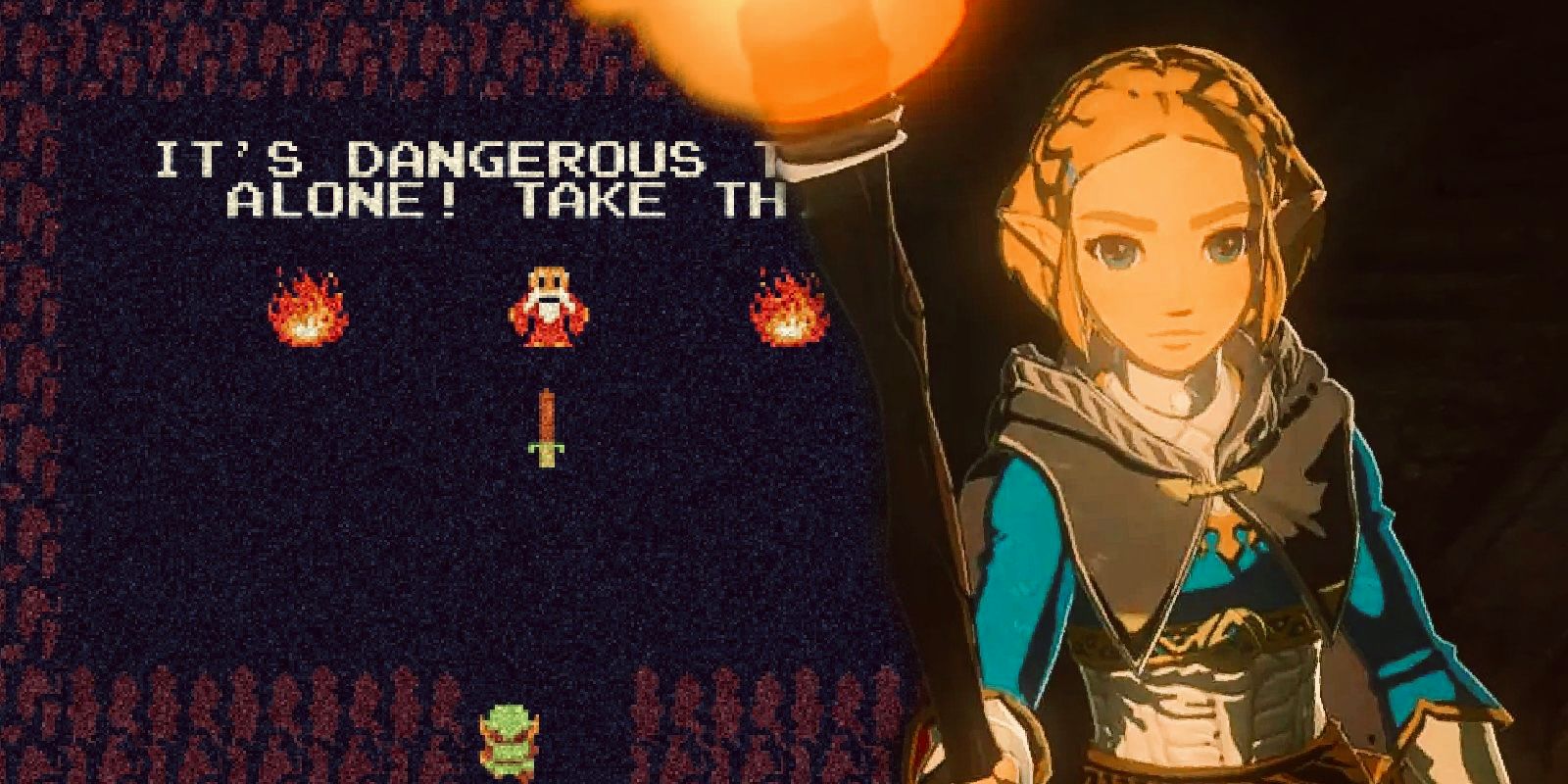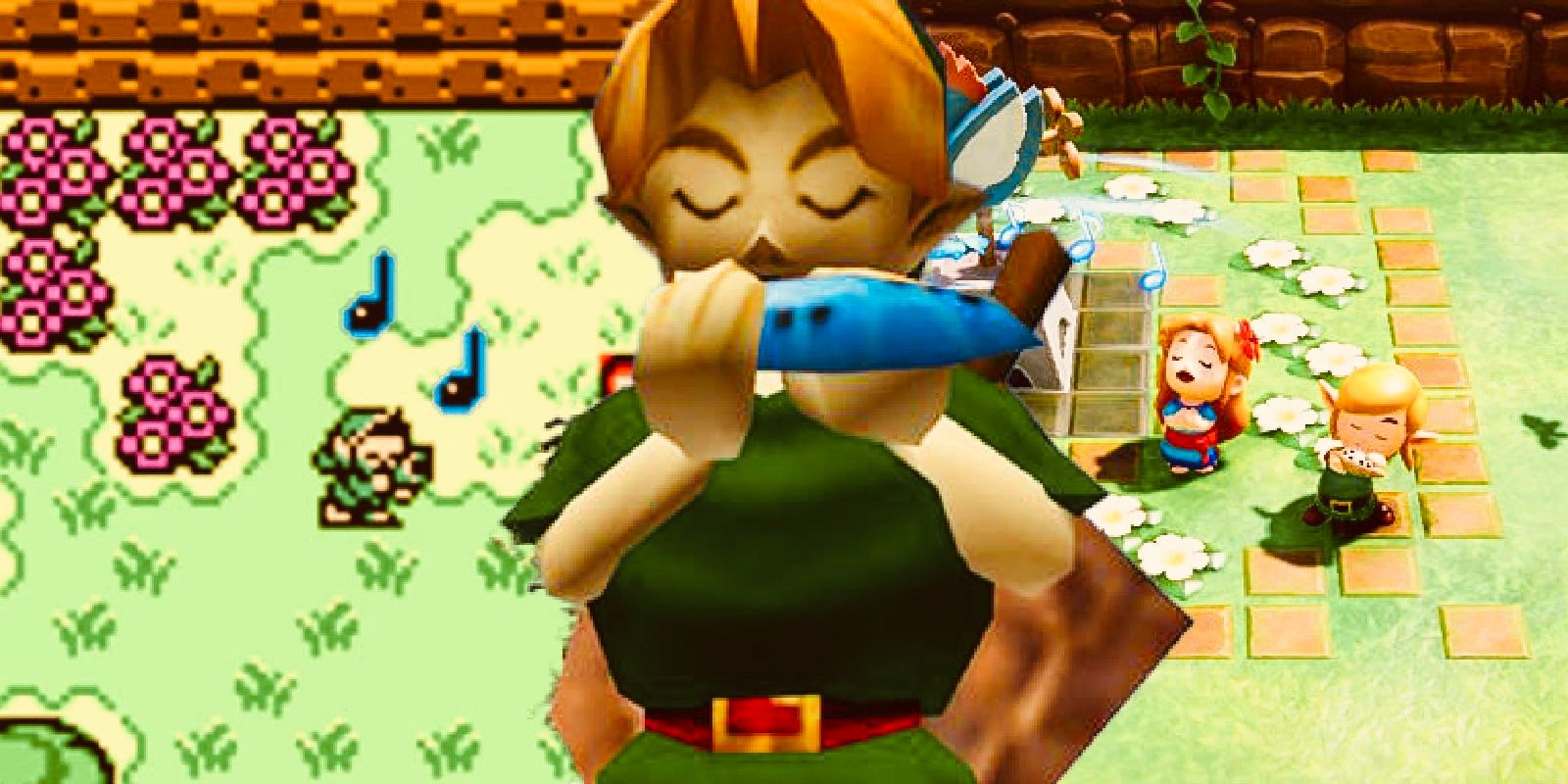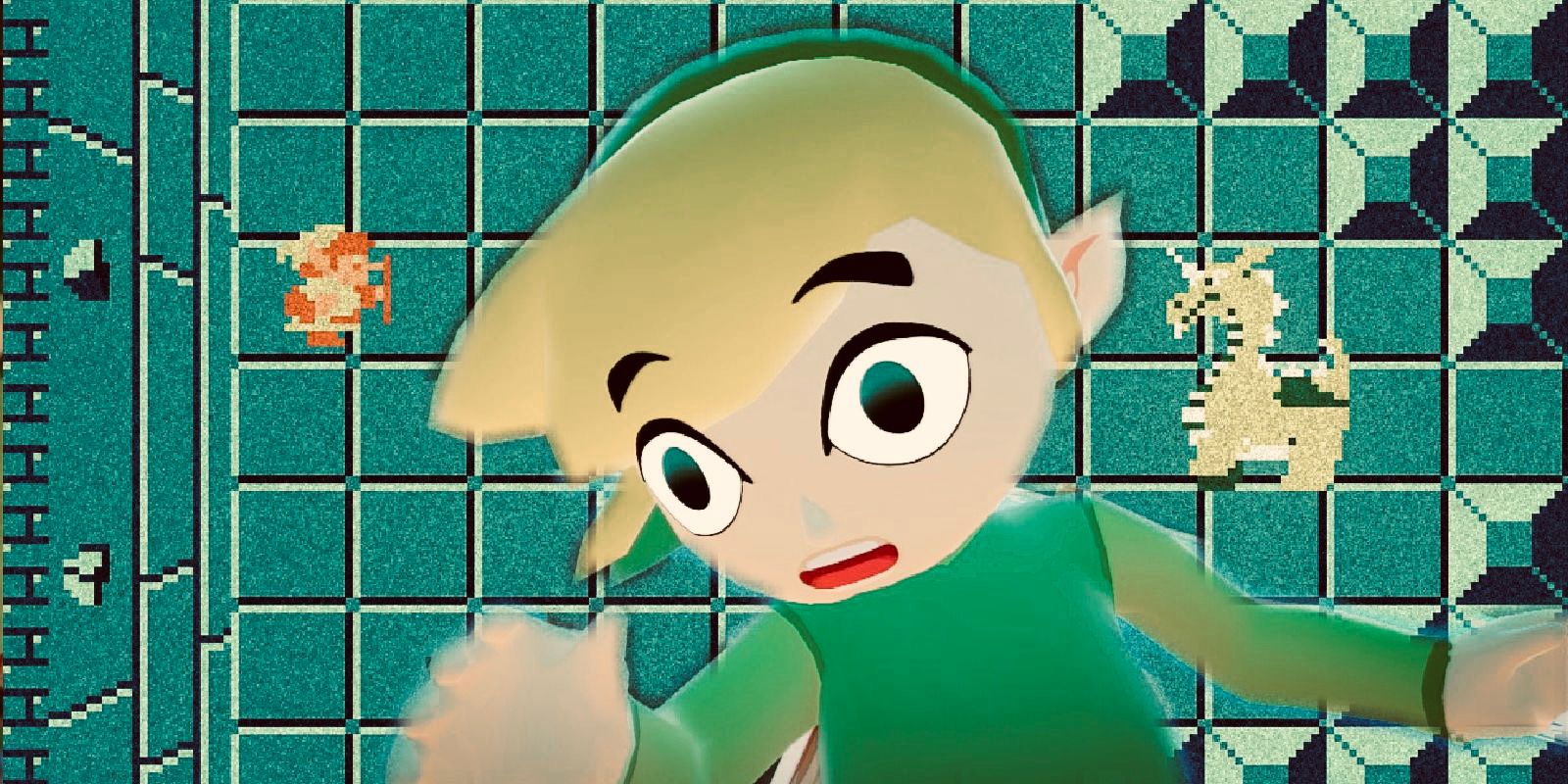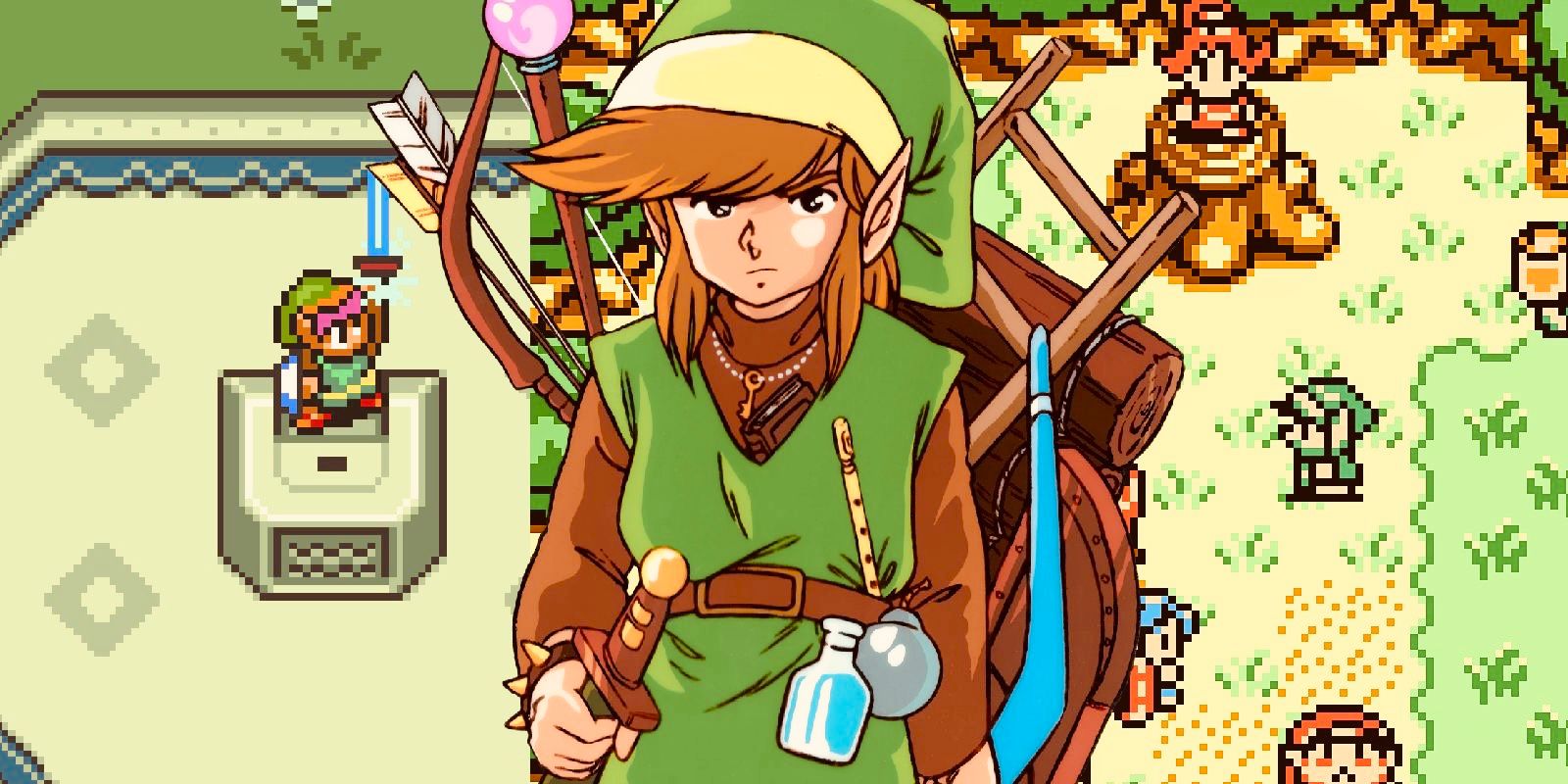It may just be a matter of nostalgia, or it could be that Nintendo simply got it right the first time, but there's still nothing like 2D Zelda. Even as times change and video games progress into the next-next generation, the classic 2D Legend of Zelda format barely seems to age at all. That fact has only been reinforced over the years as a steady stream of newer 2D Zelda title has tended to fall between big 3D releases—sometimes to varying commercial success, but always to the appreciation of Zelda fans everywhere.
Unfortunately, that steady stream has all but entirely died out in recent years, with the last original 2D Zelda being 2015's The Legend of Zelda: Tri Force Heroes for the 3DS. While Nintendo's willingness to innovate with new games is a positive thing, fans of the classic 2D style of games are understandably concerned about the future of their favorite version of Link hanging in the balance. Link has gotten used to saving the day just when things look their bleakest, but maybe 2D Zelda fans shouldn't get their hopes up this time.
Zelda's Switch From 2D To 3D Didn't Happen Overnight
Despite how sudden it may have seemed at the time, the change from 2D to 3D for the Zelda franchise was a gradual progression. While the first 3D Zelda game, The Legend of Zelda: Ocarina of Time, can be easily pointed to as the pivotal moment, even then, it's not so simple. After all, long before OoT was released, Zelda had already moved into the next generation of gaming consoles more than once. While the first two Legend of Zelda titles were released on the NES, over the next seven years, A Link to the Past and Link's Awakening would be released for the SNES and Game Boy systems subsequently. Though both of these titles were still 2D, the SNES saw a significant graphical improvement, while the Game Boy was a new type of hardware bound to similar technical limitations as the NES.
When Ocarina of Time did finally release in 1998, not only did it change the look and direction of the Legend of Zelda franchise forever, but it also sold significantly better than any other Zelda game before it. That wasn't the end of 2D Zelda's story though; even after the release of Ocarina of Time, several 2D Zelda games filled the gap between big 3D console releases, albeit often outsourced to other companies like Capcom and Grezzo. It is noteworthy to mention, however, that following the unprecedented success of Ocarina of Time, no new 2D Zelda game was released for any system other than a Game Boy. This could imply that perhaps 2D Zelda's staying power may have been more related to technical limitations than it was an acknowledgment of the franchise's roots.
It's not like Zelda was alone in the 2D to 3D transition, though. Even Mario couldn't escape the interdimensional shift with the now-classic Super Mario 64. This was simply a natural progression from 2D to 3D that occurred alongside Nintendo's greater library of successful IPs. Nintendo's greatest successes have always come in the form of new ideas and technologies that push the boundaries of what was previously possible, and even some 2D Zeldas like Spirit Tracks and Phantom Hourglass serve as a testament to that spirit of innovation.
What 2D Zelda Can Do That 3D Zelda Can't
While 3D graphics have brought Zelda further and further into the realm of realism in both graphics and gameplay, there are also some things that 2D Zelda can still do better than 3D. In fact, a lot of 2D Zelda's best aspects are actually because of its limitations, not in spite of them.
For example, part of the difficulty in any top-down 2D game is in implying height. With Breath of the Wild, much of the emphasis is on an "open air" gameplay style that leans into altitude, but with the 2D style of games, height will only always be an illusion. This means traveling between floors in a dungeon is less about climbing and more about navigating a map to see which hole Link needs to drop through to get to where he is trying to go, or which staircase takes him to a higher floor of the dungeon map. In this way, while the restriction of movement could seem limiting from one point of view, those same limits also open up new possibilities and complexities. Even though 3D Zeldas give the player more options, sometimes that degree of choice actually hinders the difficulty of puzzling and dungeon exploration.
With that in mind, it's no question that 2D Zelda games were harder—particularly the older ones. A large part of this is just due to the nature of older games: there are fewer quality-of-life upgrades, which make for less hand-holding and a slower pace overall. Still, there's something to be said for that difficulty, especially as adult players make up a good share of the modern gaming demographic, which has led to darker and more difficult fantasy games taking hold of the marketplace.
The Future Doesn't Look Promising For 2D Zelda
While the future of Zelda as a franchise is undoubtedly secure, 2D Zelda's own future is questionable, to say the least. 2017's Breath of the Wild pushed the Zelda franchise even harder in the direction of next-gen gaming, and simultaneously even further away from the traditional concepts of Zelda's 2D games. With the recent overwhelming critical and commercial success of BOTW's direct sequel, Tears of the Kingdom, Nintendo certainly has no financial incentive to go back to the 2D style any time soon.
There was one last hope for 2D Zelda fans, though. Grezzo, the company that has worked on the 2D style Zelda games for the past decade beginning with 2011's Four Swords has always been a shoo-in for players hoping that the next 2D Zelda game was just around the corner. After all, Grezzo's next-gen remake of Link's Awakening is easily one of the most celebrated video game remakes in recent years, largely due to the manner in which they retained the 2D perspective of the original while entirely updating the graphics and controls for the Nintendo Switch.
Things began to look even more promising when rumors started spreading about Grezzo hiring for help on a new "Medieval" game in 2021. Unfortunately, things didn't pan out well for Zelda fans on that front considering that the game in question turned out to be Grezzo's latest foray into mobile gaming: Jet Dragon, an exclusive Apple Arcade subscription release. Between this unfortunate development and the fact that the last non-remake 2D Zelda game was 2015's Tri Force Heroes, the odds that players will see a new 2D Zelda don't look promising.
3D Zelda Is Already Being Replaced With 4D Zelda
A big discussion in the Zelda community following the release of Tears of the Kingdom has been whether the new style of "open air" Zelda game has become the enduring paradigm for the franchise going forward. The 2D-to-3D-switch was a huge change for Zelda's gameplay mechanics in many ways, and this latest change is once again shaking up what fans thought they were supposed to expect from a Zelda game. All things considered, it wouldn't be completely outrageous to conclude that, since BOTW, 3D Zelda itself may be going out of style. The BOTW style of Zelda game is so distinctive to its previous 3D ancestors that it almost comes off as a transitionary step into a new, 4D direction. If not even 3D Zelda is safe, things look particularly grim for its 2D ancestor.
On the bright side, with the success and critical acclaim of the Link's Awakening remake, fans would be ill-conceived to completely vote against the possibility of more 2D Zelda remakes at the very least. While on the one hand, Nintendo seems to be more than open to providing players with access to the classic 2D Zelda games from past systems on Nintendo Switch Online, on the other hand, the trajectory of the series' new releases looks to be headed more toward 3D Zelda and beyond.




